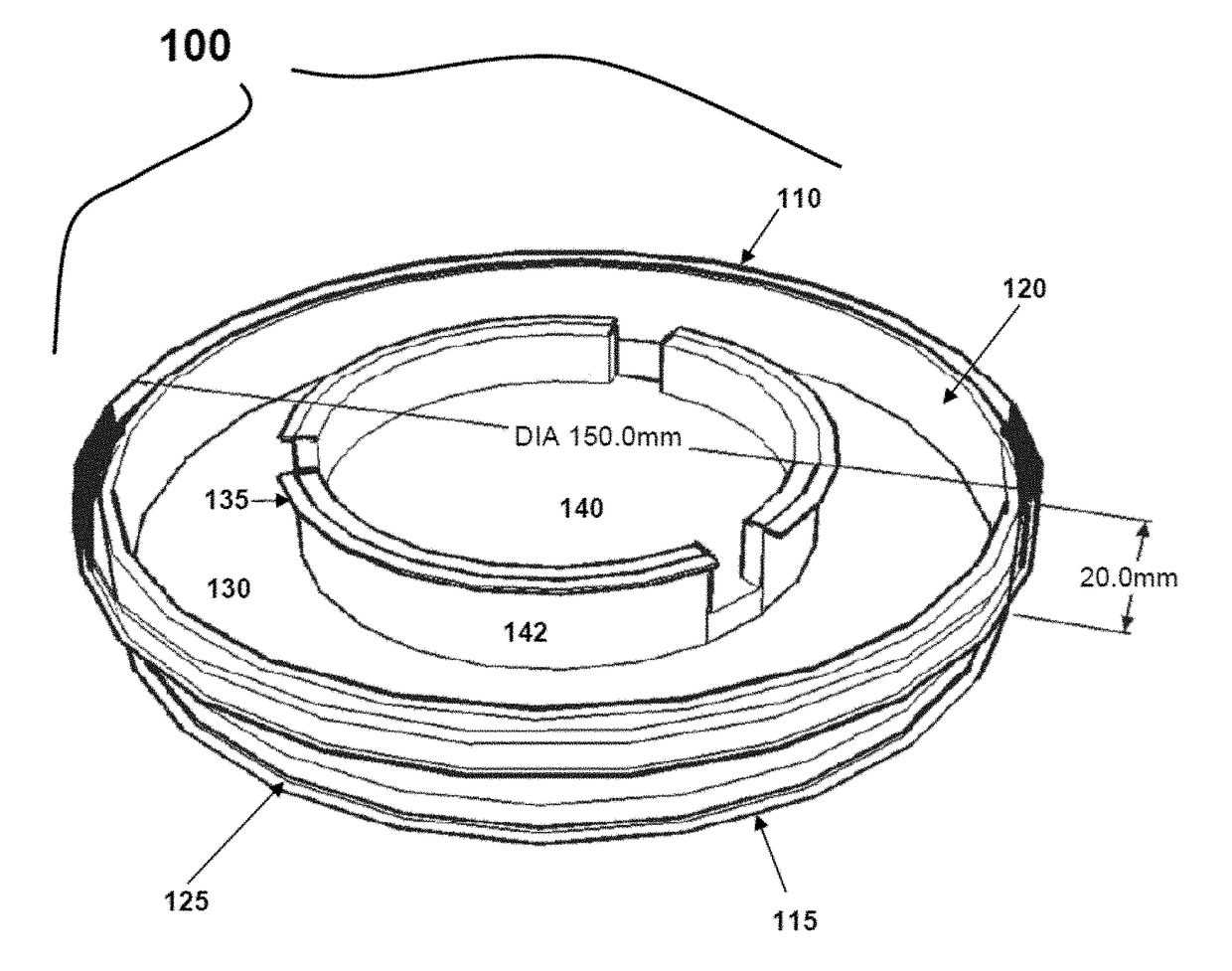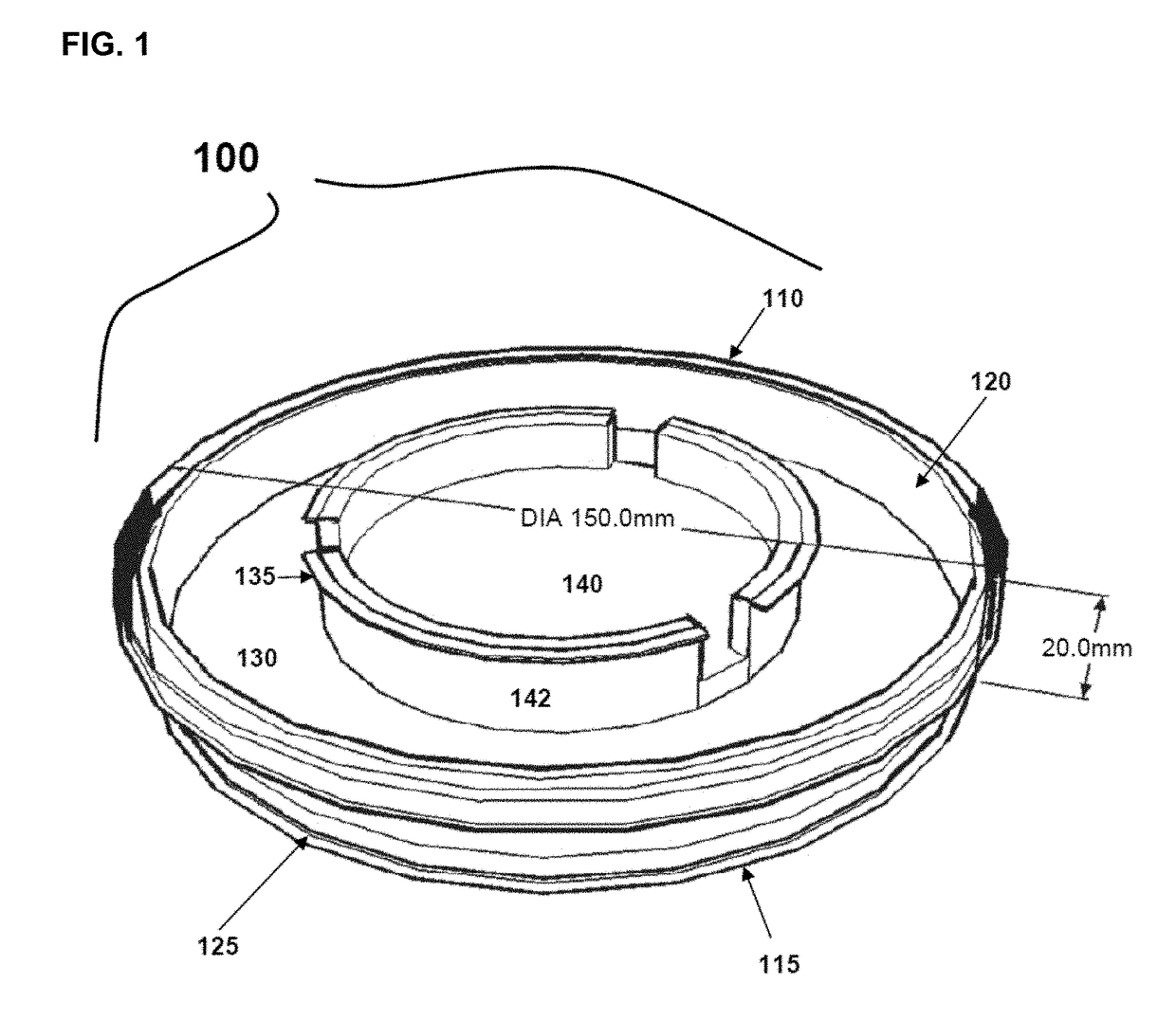Cold storage of organotypically cultured skin equivalents for clinical applications
a technology clinical applications, which is applied in the field of cold storage of organotypically cultured skin equivalents for clinical applications, can solve the problems of inability to effectively and efficiently preserve engineered tissues, inability to meet the needs of clinical use, and inability to achieve long-term storage. achieve the effect of improving the availability and clinical utility of these products
- Summary
- Abstract
- Description
- Claims
- Application Information
AI Technical Summary
Benefits of technology
Problems solved by technology
Method used
Image
Examples
example 1
[0060]This example describes a method for the production of skin equivalents.
[0061]Media.
[0062]The organotypic culture process uses six different culture media: 3T3 feeder cell medium (TM); human fibroblast growth medium (FGM); NIKS® medium (NM); plating medium (PM); stratification medium A (SMA); and stratification medium B (SMB). TM is used to propagate 3T3 cells that act as feeder cells for NIKS® cells in monolayer culture. TM is a mixture of Dulbecco's modified Eagle's medium (DME, GibcoBRL) supplemented with 10% calf serum (Hyclone). FGM is a commercially available fibroblast growth medium (Clonetics) that is used to propagate the normal human dermal fibroblast cells (NHDFs) for use in STRATAGRAFT® skin equivalent and STATATEST skin equivalent dermal equivalent layers. NM is used to grow NIKS® keratinocytes. NM is a 3:1 mixture of Ham's F-12 medium (GibcoBRL) and DME supplemented with 2.5% fetal clone II (Hyclone), 0.4 μg / ml hydrocortisone (Calbiochem), 8.4 ng / ml cholera toxin ...
example 2
[0069]This example demonstrates that storage of skin equivalents for 1 day at 2-8 C is superior to storage at 20-25 C.
Summary
[0070]STRATAGRAFT® skin tissue is a living skin substitute tissue that has a fully-stratified layer of viable epidermal keratinocytes on a collagen gel containing normal human dermal fibroblasts. The uppermost epidermal layers form a permeability barrier that prevents excessive moisture loss through the epidermis. Assays that measure these key structural and functional properties (viability, histology, and barrier function) have been identified as stability-indicating assays for monitoring the quality of STRATAGRAFT® skin tissue over time.
[0071]The production process for STRATAGRAFT® skin tissue lasts 31 days. At the end of the production process, STRATAGRAFT® skin tissues are removed from organotypic culturing conditions and placed onto HEPES-buffered nutrient-agarose shipping chambers, which are designed to maintain the viability, barrier function, and histo...
example 3
[0078]This example demonstrates that skin equivalents stored for 8 days at 2-8 C are comparable to, or superior to, tissues stored for only 1 day at 20-25 C. Reduction of the storage temperature has been shown to maintain tissue quality comparable to tissues stored at 20°-25° C. (See Example 2). The ability to store STRATAGRAFT® tissue for eight days at 2-8° C. would increase the number of days STRATAGRAFT® tissue is available for clinical use. This study tested the comparability of tissues stored for one day at 20-25° C. with tissues stored at 2-8° C. for eight days. Tissue viability was improved in the tissues that were stored at 2-8° C., even though these tissues were stored for seven additional days.
Experimental Design:
[0079]This study used one batch of tissues manufactured under cGMP at the WCBF and two batches produced at the Stratatech pilot production facility. One tissue from each batch was analyzed on process day 28. The remaining six tissues were fed on day 28 and 30, and...
PUM
 Login to View More
Login to View More Abstract
Description
Claims
Application Information
 Login to View More
Login to View More - R&D
- Intellectual Property
- Life Sciences
- Materials
- Tech Scout
- Unparalleled Data Quality
- Higher Quality Content
- 60% Fewer Hallucinations
Browse by: Latest US Patents, China's latest patents, Technical Efficacy Thesaurus, Application Domain, Technology Topic, Popular Technical Reports.
© 2025 PatSnap. All rights reserved.Legal|Privacy policy|Modern Slavery Act Transparency Statement|Sitemap|About US| Contact US: help@patsnap.com



